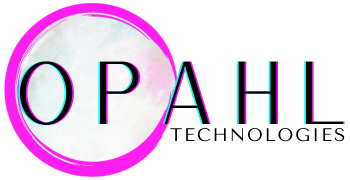The Future of Software Development: AI-Enabled Vibe Coding
Imagine a world where you can create software applications by simply describing what you want in plain English. No more struggling with complex syntax or spending hours debugging code. This is the promise of AI-enabled “vibe coding,” a groundbreaking approach to software development that is set to revolutionize the industry.
What is Vibe Coding?
Vibe coding, a concept introduced by computer scientist Andrej Karpathy in February 2025, is a new paradigm for software development that leverages the power of artificial intelligence (AI) to collaborate with users who express their programming intentions in natural language[1][2]. Instead of writing traditional code, developers can now “vibe code” by giving high-level instructions or intentions to AI systems, which then transform these instructions into executable code[3][4].
How Does Vibe Coding Work?
The process of vibe coding is surprisingly simple. Instead of manually typing out every line of code, developers interact with AI as a coding partner. They provide instructions like “create a login page” or “make this button open a modal,” and the AI generates the underlying code automatically[3][4]. Users then review, steer, and refine the AI’s output, often in real-time, forming an iterative and collaborative workflow[1][3][4].
Under the hood, vibe coding is powered by large language models (LLMs) such as ChatGPT, OpenAI’s Codex, and others[1][2][3]. These AI systems have been trained on vast amounts of code and natural language data, allowing them to understand and generate code based on human instructions.
The Benefits of Vibe Coding
One of the most significant benefits of vibe coding is that it **lowers the technical barrier to software development**. Even amateur programmers can now build applications without deep expertise[2]. This democratization of software development has the potential to unleash a wave of innovation and creativity, as more people can bring their ideas to life through code.
For professional developers, vibe coding offers a significant boost in productivity. By automating boilerplate code, generating test cases, scaffolding files, and suggesting architectural decisions, AI frees up developers to focus on more complex design and user experience aspects[3]. This “code first, refine later” mindset promotes fast prototyping and iterative development, aligning with agile methodologies[1].
The Importance of Human Creativity
While AI plays a crucial role in vibe coding, it’s important to note that it cannot replace human creativity and innovative problem-solving[1]. AI generates code based on patterns and examples it has learned, but it lacks the ability to set goals, understand user needs, or come up with novel solutions. This is where human developers shine, leveraging their creativity and domain knowledge to guide the AI and ensure the final product meets the desired requirements.
The Vibe Coding Ecosystem
As vibe coding gains traction, a thriving ecosystem of AI-assisted coding tools has emerged to support this new approach. Platforms like Replit, Cursor, Microsoft GitHub Copilot, Windsurf, and various VSCode integrations allow developers to “chat” with AI inside code editors, where the AI continuously writes and adjusts code based on conversational prompts[1][3].
The Future of Software Development
AI-enabled vibe coding is poised to redefine programming from a manual, syntax-driven task to a collaborative, intent-driven process. By transforming human ideas and natural language instructions into real software, it has the potential to **dramatically democratize and speed up development**[1][2][3][4].
As the technology continues to evolve, we can expect to see even more sophisticated AI systems that can handle increasingly complex tasks and understand more nuanced human instructions. This will further blur the lines between coding and conversing, making software development accessible to a wider range of people.
However, it’s crucial to remember that vibe coding is not a replacement for human developers, but rather a powerful tool to augment their capabilities. The future of software development lies in the **symbiotic relationship between human creativity and AI-assisted automation**. By leveraging the strengths of both, we can unlock new levels of productivity, innovation, and creativity in the world of software development.
#VibeCoding #AISoftwareDevelopment #FutureOfCoding
-> Original article and inspiration provided by John Ruwitch
-> Connect with one of our AI Strategists today at Opahl Technologies


